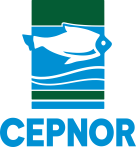Artigo 03
CARACTERIZAÇÃO ECOLÓGICA DE ALGUMAS ESPÉCIES DA FAUNA ACOMPANHANTE DO CAMARÃO CAPTURADO COM PUÇA DE ARRASTO NA ZONA ESTUARINA DO RIO TAPERAÇU (BRAGANÇA-PA-BRASIL)
| Boletim Técnico Científico - Volume 6 - Numero 3 |
| Resumo |
|---|
| O presente trabalho visa ampliar o conhecimento da fauna de peixes capturada com puçá de arrasto para camarão em ambiente estuarino do Rio Taperaçu (Pará-Brasil). Um total de 5.079 indivíduos representantes de 28 famílias e 74 espécies foi analisado. Porém, foram consideradas como abundantes, as espécies Ariopsis bonillai, Arius rugispinis, Cathorops spixii, Pseudauchenipterus nodosus, Choloroscombrus chrysurus, Cetengraulis edentulus, Pterengraulis atherinoides, Stellifer naso, S. rastrifer e S. stellifer. A maioria dos exemplares capturados encontrava-se no estádio juvenil, devido ao apetrecho de pesca utilizado nas pescarias. A diversidade específica H’ (Shannon) registrou maiores valores em meses do período de estiagem e a eqüitabilidade E mostrou maior uniformidade nos últimos meses dos anos (1999 e 2000). A riqueza d também revelou valores maiores nos mesmos anos. As onze espécies abundantes foram estatisticamente diferentes para os dois períodos estacionais (chuvoso e estiagem). Assim, o local analisado neste estudo evidenciou a sua importância biológica para uma ictiofauna predominantemente jovem, uma vez que este ambiente é favorável às condições de abrigo, crescimento e alimentação para os indivíduos que ali residem permanente ou temporariamente. A comunidade de peixes analisada apresentou equilíbrio, com grande riqueza de espécies. |
| Abstract |
|---|
| The present research work aims at widening the knowledge on the fish fauna of the by-catch in shrimp fisheries with tow net in the Taperacu River’s estuarine zone (Pará State, Brazil). A total of 5,079 specimens representing 28 families and 74 species were analyzed, but only Ariopsis bonillai, Arius rugispinis, Cathorops spixii, Pseudauchenipterus nodosus, Chloroscombrus chrysurus, Cetengraulis edntulus, Pterengraulis atherinoides, Stellifer naso, S. rastrifer and S. Stellifer were considered as abundant species. Most of the captured specimens were in a juvenile sexual condition owing to the fishing gear’s low selectivity. The Shannon’s species diversity index, H’ was found to have higher values during the dry season, whereas the equitability index, E showed stability over the last months of years 1999 and 2000, a trend also displayed by the species richness index, d. The abundance of the eleven outstanding species showed statistically-significant differences between the rainy and dry seasons. Therefore, the studied estuarine zone was shown to be particularly important for the survival of a predominantly young fish fauna, since it seems to be endowed with favorable conditions for shelter, growth and feeding of the individuals that hold permanent or temporary dwellings. The analyzed fish community proved to be in a balanced condition, with great species richness. |
| Palavras-Chave |
ecológica, espécies, fauna, camarão, capturado, estuarina |
